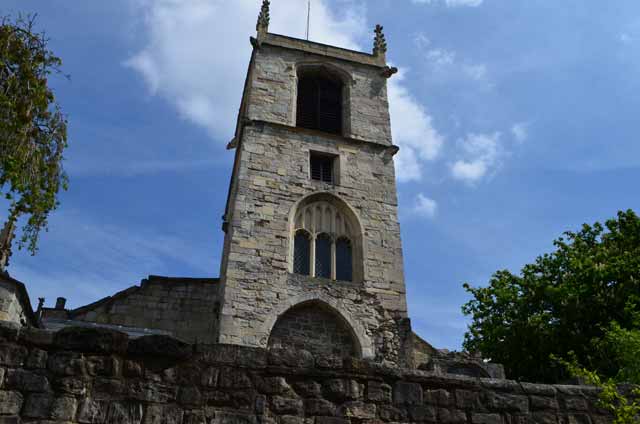Within the walls of St Mary’s Abbey, this church is thought to have been founded by Earl Siward of Northumbria – best-known for his campaign against the Scots that led to the defeat of Macbeth – and who is likely buried in the church or nearby within the area called Galmanho.
According to legend, Siward was born in Denmark and his ancestral line originated with a man-bear called Ursus (as in ursine or ‘bear-like’.) Siward was indeed described as ‘almost a giant in stature, very strong mentally and physically’. So strong in fact, that he managed to single-handedly kill a dragon.
On his arrival in Britain, he met an old man on the beach (possibly the god Odin) who gave him a magical banner called ‘Ravenlandeye’, which translates as ‘Raven, terror of the land.’ Then, after various escapades he launched a campaign against the Scots, resulting in the death of King Macbeth.
Finally, dying of dysentery, Siward asked to be dressed in full armour, with a sword in his hand. Some reckon he then threw himself from York’s walls, so he could die with a degree of honour.
These tales appear to link Siward with Norse traditions of berserker rituals and warrior prowess. The magical raven banner reputedly sat above his tomb. So there you have it. York’s very own legendary Viking man-bear.
Olaf, to whom this church is dedicated, was king of Norway; he died in battle in 1030. Over time his shrine at Nidaros, Trondheim became a place of miracles and he was venerated by both Christians and pagans. St Olave’s in York is the earliest building dedicated to him in the British Isles; only a dozen churches are dedicated to him in this country. There was a church here within two decades of his death.
6

2 comments
Geoffrey Tobin
Like many of Britain’s treasures, St Olave’s has an association with Alan Rufus to whom it was given some time after 1068. Monks led by Stephen of Whitby sought shelter under Alan’s aegis so he gave them St Olave’s, then built them a grand new Abbey adjacent to it named St Mary’s.
admin
Thanks for your comment Geoffrey. I’ve recently added some info on the legendary Earl Siward, which may also be of interest.